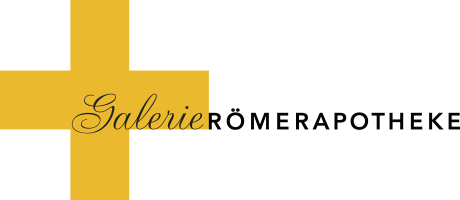Judit Villiger
World/Mind and Face
Judit Villiger's miniature sculptures exude an air of mystery as they stand arranged across the illuminated surfaces of several desk-shaped bases. In the glow of the cool light, they look as if they have come straight out of cyberspace: here, towering Atlases supporting aqua-blue globes; there, a vase tipped over with a brown liquid pouring out. A hand reaches out towards a star. Elsewhere, two hands grip a brain which is surrounded by a silhouette. These puzzling works of artistic discovery appear individually placeless and timeless.
Judit Villiger's approach in the area of sculpture is innovative and audacious. Her "Musée imaginaire" had already attracted widespread attention by the time the artist "borrowed" details from fourteen world famous masterpieces dating back to different stylistic eras, making fist-sized sculptural recreations of them in epoxy resin. The sculptress who forms every sculpture in wax, before recreating them in the foundry and finally hand-painting them, has gradually come to specialize in desk-sized format.
In her new work, the artist extends her approach to contemporary art. The miniature sculptures are structured from three-dimensional objects whose subjects are borrowed from the history of art and culture and translated into the here and now. Released from the burden of their origin, the building blocks of the hybrid creation have an anonymous and alien impact. Whilst on the one hand they conceal their actual identity, on the other they conjure up images. The sculptures do not, however, divulge their secret. Or do they? Does the pattern on the fragment of cloth remind us of the Turkish table cloths in the paintings of Jan Vermeer? And do the pickled gherkins perhaps remind us of the parodying arrangements composed by Fischli and Weiss?
Judit Villiger's art involves conscientious experimentation with artistic motifs and concepts, with identity and alienation, with the rules of appearance and masquerade. Her work is inter-laced with seriousness and humor, playfulness and enjoyment. Villiger's art communicates on a humorous level, comparable to the work of Fischli and Weiss. However, it is also shaped by sharp and precise insightfulness, just as Jan Vermeer's had been in his time. Sometimes, the perspective transforms things mysteriously in a way that is familiar from the "impossible worlds" of M.C. Escher. Or the discussed imagery of the epoxy objects which appear dismembered and anamorphic, like Markus Raetz's pictures of discovery.
Just as in a card-indexing system, the oil paintings on view in the exhibition ultimately form the individual building blocks and show the entire inventory from which the miniature sculptures are composed.
There is something open-ended about Judit Villiger's narrative universe of sculptures and pictures. At no point does it come to an end, know any bounds and barriers; it could spread out in all directions. It is accessible to everyone. It gives free rein to creative initiative and challenges the curious-minded to indulge in stimulating speculation and enjoyment.
Kathrin Frauenfelder, Art Historian, Zurich
Judit Villiger's miniature sculptures exude an air of mystery as they stand arranged across the illuminated surfaces of several desk-shaped bases. In the glow of the cool light, they look as if they have come straight out of cyberspace: here, towering Atlases supporting aqua-blue globes; there, a vase tipped over with a brown liquid pouring out. A hand reaches out towards a star. Elsewhere, two hands grip a brain which is surrounded by a silhouette. These puzzling works of artistic discovery appear individually placeless and timeless.
Judit Villiger's approach in the area of sculpture is innovative and audacious. Her "Musée imaginaire" had already attracted widespread attention by the time the artist "borrowed" details from fourteen world famous masterpieces dating back to different stylistic eras, making fist-sized sculptural recreations of them in epoxy resin. The sculptress who forms every sculpture in wax, before recreating them in the foundry and finally hand-painting them, has gradually come to specialize in desk-sized format.
In her new work, the artist extends her approach to contemporary art. The miniature sculptures are structured from three-dimensional objects whose subjects are borrowed from the history of art and culture and translated into the here and now. Released from the burden of their origin, the building blocks of the hybrid creation have an anonymous and alien impact. Whilst on the one hand they conceal their actual identity, on the other they conjure up images. The sculptures do not, however, divulge their secret. Or do they? Does the pattern on the fragment of cloth remind us of the Turkish table cloths in the paintings of Jan Vermeer? And do the pickled gherkins perhaps remind us of the parodying arrangements composed by Fischli and Weiss?
Judit Villiger's art involves conscientious experimentation with artistic motifs and concepts, with identity and alienation, with the rules of appearance and masquerade. Her work is inter-laced with seriousness and humor, playfulness and enjoyment. Villiger's art communicates on a humorous level, comparable to the work of Fischli and Weiss. However, it is also shaped by sharp and precise insightfulness, just as Jan Vermeer's had been in his time. Sometimes, the perspective transforms things mysteriously in a way that is familiar from the "impossible worlds" of M.C. Escher. Or the discussed imagery of the epoxy objects which appear dismembered and anamorphic, like Markus Raetz's pictures of discovery.
Just as in a card-indexing system, the oil paintings on view in the exhibition ultimately form the individual building blocks and show the entire inventory from which the miniature sculptures are composed.
There is something open-ended about Judit Villiger's narrative universe of sculptures and pictures. At no point does it come to an end, know any bounds and barriers; it could spread out in all directions. It is accessible to everyone. It gives free rein to creative initiative and challenges the curious-minded to indulge in stimulating speculation and enjoyment.
Kathrin Frauenfelder, Art Historian, Zurich
